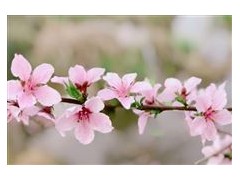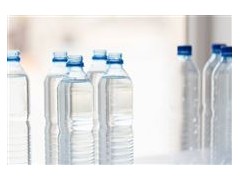The paper printing and packaging industry has a relatively strong ability to absorb labor and a relatively low degree of environmental pollution, which is strongly supported by the state and local governments. In recent years, the Chinese government has promulgated a large number of industrial policies related to the paper printing and packaging industry.
1、 Announcement on implementing green printing
In October 2011, the former General Administration of press and publication and the Ministry of environmental protection issued the announcement on the implementation of green printing, which decided to jointly carry out the implementation of green printing. The scope of implementation includes printing production equipment, raw and auxiliary materials, production processes, publications, packaging and decoration and other printing materials, involving the whole process of printing product production.
2、 Green procurement guide for enterprises (Trial)
In order to promote the construction of a resource-saving and environment-friendly society, guide and promote enterprises to actively fulfill their environmental protection responsibilities, establish a green supply chain, and achieve green, low-carbon and circular development, on December 22, 2014, the Ministry of Commerce, the former Ministry of environmental protection and the Ministry of industry and information technology jointly issued the green procurement guide for enterprises (for Trial Implementation), which proposed that:
Encourage enterprises to improve the procurement process, actively participate in the product development and manufacturing process of suppliers, guide suppliers to reduce the consumption of various raw and auxiliary materials and packaging materials through value analysis, replace them with more environmentally friendly materials, and avoid or reduce environmental pollution;
Enterprises are encouraged to require suppliers to supply products or raw materials that meet the requirements of green packaging, not to use packaging materials containing toxic and harmful substances, but to use packaging materials that can be recycled, degraded or treated innocuously, avoid excessive packaging, and minimize the consumption of packaging materials on the premise of meeting demand;
Purchasers and suppliers can drive the green consumption of the whole society by resisting excessive packaging of goods, guiding consumers to actively participate in green consumption, and reducing the use of disposable goods and plastic shopping bags;
According to the relevant requirements of the guide, green printing products and services meet the requirements of green procurement, which will bring new opportunities for the future development of China's green printing enterprises and green raw and auxiliary material manufacturers, and play an important role in promoting the green transformation of the whole printing and packaging industry.
3、 Made in China 2025
In May 2015, the State Council issued the strategic plan of "made in China 2025". Made in China 2025 is a national strategic plan to strengthen the high-end manufacturing industry and the action program for the first decade of the "three decades" strategy to build China into a manufacturing power.
The program proposes to accelerate the green transformation and upgrading of the manufacturing industry, comprehensively promote the green transformation of traditional manufacturing industries such as steel, nonferrous metals, chemical industry, building materials, light industry, printing and dyeing, and vigorously develop and promote green processes, technologies and equipment to achieve green production; We will accelerate the integration of the new generation of information technology and manufacturing technology, and take intelligent manufacturing as the main direction of the deep integration of industrialization and informatization.
We should focus on the development of intelligent equipment and products, promote the intelligent production process, cultivate new production methods, and comprehensively improve the intelligence of enterprise research and development, production, management and service. In the future, with the continuous popularization of intelligent manufacturing, intelligent packaging and printing will become the future development direction of the industry.
4、 In July 2016, the Ministry of industry and information technology and the Ministry of Finance jointly issued the notice on volatile organic compounds reduction plan for key industries. According to the target requirements of the plan, the VOCs emissions of the industrial sector will be reduced by 3.3 million tons by 2018 compared with 2015.
The plan selects 11 industries including ink, adhesives, packaging and printing, petrochemical industry and coating industry as key industries to accelerate VOCs reduction and improve green manufacturing level.
The plan clearly proposes that the packaging and printing industry should implement technological transformation projects and promote the application of low (no) VOCs content green ink, polishing oil, dampening solution, cleaning agent, adhesive, diluent and other raw and auxiliary materials; Flexographic printing process and solvent-free composite process are encouraged, and gravure printing process and dry composite process are gradually reduced.
5、 Guiding opinions on accelerating the transformation and development of China's packaging industry
In December 2016, the guiding opinions on accelerating the transformation and development of China's packaging industry issued by the Ministry of industry and information technology and the Ministry of Commerce proposed that packaging should be positioned as a service-oriented manufacturing industry; Build an industrial technology innovation system around green packaging, safety packaging, intelligent packaging and standard packaging; While ensuring the medium and high-speed growth of the industry, we should improve the ability of agglomeration development and brand cultivation; Increase R & D investment and improve the independent breakthrough ability and international competitiveness of key technologies; Improve the informatization, automation and intelligence of the industry.
At the same time, we should get rid of the high consumption and high energy consumption of the packaging industry and establish and form a green production system; Lead the gathering of core capabilities of military and civilian integrated packaging technology, and improve the level of protective packaging support for carrying out diversified military tasks; Optimize the industrial standard system, standardize the animal flow supply chain with packaging standardization, and enhance the standard management level and international benchmarking rate.
6、 China packaging industry development plan (2016-2020)
In December 2016, the China packaging industry development plan (2016-2020) issued by the China Packaging Federation put forward the strategic task of building a powerful packaging country, insisting on independent innovation, breaking through key technologies, comprehensively promoting the integrated development of green packaging, safe packaging and intelligent packaging, and effectively improving the comprehensive competitiveness of packaging products, packaging equipment and packaging printing in key fields.
7、 In April 2017, the State Administration of press, publication, radio, film and television issued the development plan for the printing industry during the 13th Five Year Plan period, which stated that during the 13th Five Year Plan period, the scale of China's printing industry was basically synchronized with the development of the national economy and continued to expand. By the end of the 13th Five Year Plan period, the total output value of the printing industry had exceeded 1.4 trillion yuan, ranking in the forefront of the world.
Digital printing, packaging printing, new printing and other fields maintained rapid development, and the foreign processing trade volume of printing increased steadily; Promote the transformation of packaging printing to creative design, personalized customization and environmental protection applications, and support the integrated development of offset printing, screen printing, flexo printing and other printing methods with digital technology. The national policies of the paper packaging and printing industry provide strong support for the development of the industry.
8、 In May 2019, the State Administration of market supervision and Administration issued the green packaging evaluation methods and guidelines, which stipulated the green packaging evaluation criteria, evaluation methods, evaluation report contents and formats for the requirements of low-carbon, energy conservation, environmental protection and safety of green packaging products, and defined the connotation of "green packaging":, Packaging that is less harmful to human health and ecological environment and consumes less resources and energy.
The evaluation methods and guidelines for green packaging specify the key technical requirements for green packaging grade evaluation from four aspects: resource attribute, energy attribute, environmental attribute and product attribute.
9、 The catalogue of industries encouraged by foreign investment (2019 Edition) will be implemented
On February 1, 2019, the national development and Reform Commission and the Ministry of Commerce issued the catalogue of industries that encourage foreign investment (Draft for comments), which clearly stipulates special packaging and printing equipment that encourage foreign investment and provinces and cities that invest in the central and western regions. The catalogue of industries encouraged by foreign investment (Draft for comments) includes two parts: one is the national catalogue of industries encouraged by foreign investment, which is a revision of the current catalogue of industries for the guidance of foreign investment and is applicable to foreign investment projects in all provinces (autonomous regions and municipalities). Second, the catalogue of foreign investment advantageous industries in the central and western regions is a revision of the current catalogue of foreign investment advantageous industries in the central and western regions, which is applicable to foreign investment in the central and western regions, the northeast region and Hainan Province.
On June 30, 2019, the catalogue of industries encouraged by foreign investment (2019 Edition) was officially released and came into effect on July 30, 2019. According to statistics, many printing and packaging industries have been included in the national catalogue of encouraged foreign investment industries, and six provinces including Shanxi, Anhui and Jiangxi are encouraged to develop the packaging and printing industry.
10、 The list of production restrictions was released in September, and the policy of environmental protection and graded production restrictions was implemented for the first time
In early August 2019, the Ministry of ecology and environment issued the guiding opinions on strengthening the response to heavy pollution weather and consolidating emergency emission reduction measures (hereinafter referred to as the opinions). The opinions define the performance grading indicators and differentiated emergency emission reduction measures for 15 industries, including steel, coking, foundry, glass and petrochemical. In principle, enterprises listed as grade A will not be the focus of emission reduction during the period of heavy pollution, and the frequency of supervision and inspection will be reduced. This is the first time compared with the previous production restriction policy. It is reported that the 15 performance graded control industries include long process steel, copper smelting, oil refining and petrochemical, coking, ceramics, pharmaceuticals, alumina, glass, pesticides, electrolytic aluminum, lime kiln, coating, carbon, casting and ink. It can be seen that only the relevant ink industry is listed as a performance graded control industry, and packaging printing is not included in it. It belongs to a non performance graded control industry and does not belong to graded management standards. It also needs to strictly abide by emission reduction and related early warning schemes.
11、 Unorganized emission control standard of volatile organic compounds was officially issued
In June 2019, the Ministry of ecological environment and the State Administration of market supervision jointly issued the control standard for fugitive emission of volatile organic compounds (GB 37822-2019). This standard is jointly issued by the Ministry of ecological environment and the State Administration of market supervision. It is the first national standard issued. From July 1, 2019 for new enterprises and July 1, 2020 for existing enterprises, the unorganized emission control of VOCs shall be implemented in accordance with the provisions of this standard. All localities may implement this standard in advance with the approval of the provincial people's government according to the local environmental protection needs and economic and technical conditions. This standard specifies the requirements for the unorganized emission control of VOCs material storage, the unorganized emission control of VOCs material transfer and transportation, the unorganized emission control of VOCs in process, the VOCs leakage control of equipment and pipeline components, the unorganized emission control of VOCs in open liquid surface, the requirements for VOCs unorganized emission waste gas collection and treatment system, and the pollution monitoring requirements in and around the plant area of the enterprise.
12、 Five ministries and commissions issued opinions on promoting green development of printing industry
In September 2019, The State Press and Publication Administration and other five ministries and commissions issued the opinions on promoting the green development of the printing industry (hereinafter referred to as the opinions) It is pointed out that we will promote the improvement of the system and mechanism for the green development of the printing industry, promote the construction of a pilot area for the coordinated development of the printing industry in Beijing, Tianjin and Hebei, promote the construction of an innovation highland for the integrated development of the printing industry in the Yangtze River Delta and a platform for the deepening opening and connection of the printing industry in the Pearl River Delta, accelerate the development of new digital printing technologies, promote the improvement of the standards and technical support for the green development of the printing industry, and promote the implementation and coordination of major projects for the green development of the printing industry, Promote the establishment of China Printing Industry Innovation Fund. The publication of the opinions will play an important leading role in the green development of China's printing industry.
13、 The national development and Reform Commission ordered enterprises to stop work collectively
Ning Jizhe, deputy director of the national development and Reform Commission and director of the National Bureau of statistics, said at the State Council's regular policy briefing held by the State Council Information Office on the 23rd that "one size fits all" law enforcement was a sore point issue strongly reflected by enterprises. Enterprises are the main body of the market and an important force in the construction of the business environment. Law abiding operation is a principle that any enterprise must abide by, and is also the way for the long-term development of enterprises. According to the regulations on optimizing the business environment promulgated by the State Council, except under specific circumstances, market entities shall not be required to suspend production or business generally, so as to effectively protect the legitimate rights and interests of enterprises and avoid interfering with the normal production and business activities of market entities, affecting the sustained and healthy economic development and the stability of the overall social situation. The regulations on optimizing the business environment will come into effect on January 1, 2020.
14、 The Guiding Catalogue for industrial structure adjustment (2019 Edition) was published
On November 6, 2019, the national development and Reform Commission issued Order No. 29 to promulgate the Guiding Catalogue for industrial structure adjustment (2019 version), which will be implemented as of January 1, 2020. The catalogue (2019 Edition) covers 48 industries and 1477 entries, including 821 encouraged, 215 restricted and 441 eliminated. In terms of the number of entries, the total number of entries increased by 69, including 60 for the encouragement category, 8 for the restriction category and 17 for the elimination category; From the perspective of revision, 822 articles were revised (including addition, modification and deletion), and the revision rate exceeded 50%. Although the items related to the printing, packaging and papermaking industry have not been changed much, they have been standardized to a certain extent, that is, the direction of enterprise development has been clarified, and it should develop towards scale and intensification.
15、 Three national vocational skill standards for printing were officially promulgated
In 2019, the Ministry of human resources and social security promulgated 24 national vocational skills standards, including industrial solid waste treatment and disposal workers. The 24 occupations for which the standard is issued this time cover the environmental protection and residents' service fields of the fourth category "social production service and life service personnel" in the classification of occupations of the people's Republic of China (2015 Edition), as well as the chemical industry, industrial beauty, light industry, printing, construction and other fields of the sixth category "production, manufacturing and related personnel". Among the 24 national vocational skill standards promulgated this time, there are three national vocational skill standards related to the printing industry: prepress processing and production personnel, printing operators and post press production personnel. The "new standard" involves 14 major types of work in three types of occupations in the printing industry, basically covering the major types of printing jobs that have realized industrial production. This is the first batch of national vocational skill standards formally promulgated in the printing field since the printing industry supervision and management function was assigned to the Central Propaganda Department and the national vocational qualification system reform.




